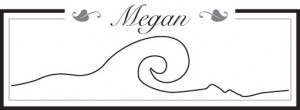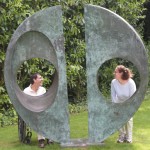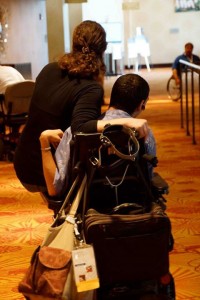How do you react when you come across something that is different? We might react with curiosity, fear, comparisons, hesitation, or acceptance. These are all normal reactions when we meet “the other.”
In an essay my father, Louis McLeod, PhD wrote called The Fear of the Other: “Deep in the human experience is an innate fear or suspicion of that which is different or unfamiliar. We can experience people with whom we are in conflict as “dangerous” to some degree… I wonder how to transform my seeing the “other who is different from me” into the friend or partner who has much the same yearnings for safety, connection and growth as I do? How can I move beyond mere tolerance to acceptance?”
While each one of us has positive and negative experiences in creating friendships, partnerships, and work experiences, I have recently thought a great deal about how Barton and I move this fear aside in the work we do, and in the work we want to do.
Since moving to Raleigh in 2005, we have led a number of workshops and have spoken at a number of conferences. Since the release of Ink in the Wheels: Stories to Make Love Roll, this dream of national and inter-national speaking has only expanded. We have tasted the phenomenal change that occurs when we speak in front of others.
However, not everyone is ready for us. How incensed I was for us to have gone to a conference where Toastmasters touted how inclusive they were only for Barton to be rejected as a member of the Toastmasters of Chapel Hill Club because of his slurred speech. The rejection was covered in flowery language, “Well, he wouldn’t be able to achieve the objectives…” While we did find a more accepting chapter, it never dissolved the sour tainted taste that we were exposed to.
The point, though, is that we did not stop. We continued on believing in the vision that was bigger than the challenges faced in front of us, and will continue to search for organizations and people that see the spark that happens when Barton and I are together and want more, for themselves.
As we step into the spotlight more, we know that not everyone is ready for the transformation that Barton and I present. It means breaking down our own barriers, breaking down the unconscious limitations that we hold, for others, and even for ourselves. And isn’t that such a hard thing to do?
Recently, when looking at how to showcase our abilities, I wrote: “We can’t be afraid of Barton’s speech pattern—otherwise we are training other people to be afraid if it, too.”
We have played with speaking in public quite a bit, and Barton’s accent has been in much discussion before. In fact, Barton wrote an article for The News and Observer looking at what it means to find ways of connection.
Sometimes, it’s not even in the words we say. At the Living Well with a Disability Conference, one morning I decided to ride in Barton’s lap; admittedly, I was being lazy, complaining about my sore feet.
But look what happened when the conference photographer, Karen Kain, caught us whizzing by. We caused many people to turn their heads as Barton zoomed down the conference aisles, and we also visually shared how people with disabilities can discover relationships, love and connection with others.
There are times when I question my own strength. Wouldn’t it be easier if… But we did not take the easy path, because we were meant for something greater, to create even greater change, and leave others wondering how they, too, can come to accept the other.
Speaking of Understanding: Speech Impediments and Public Speaking
Barton Megan Speak: Communication for People with Disabilities without Words



